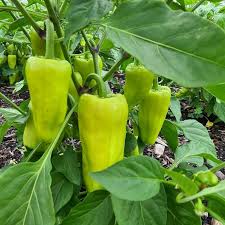Coffee farming involves several critical steps to ensure a healthy and productive crop. Below is a comprehensive package of practices for coffee cultivation:
1. Site Selection and Soil Preparation
Climate and Soil Requirements:
- Coffee grows best in tropical climates with temperatures between 15-25°C.
- Optimal rainfall: 1500-2500 mm annually.
- Prefers well-drained, deep loamy soils rich in organic matter.
- Soil pH: 6.0 to 6.5.
Land Preparation:
- Clear the land of weeds, rocks, and debris.
- Conduct soil testing to determine nutrient levels and pH.
- Plow the land to a depth of 30-45 cm to improve aeration and root penetration.
- Prepare contour lines or terraces on sloped land to prevent erosion.
2. Planting Material and Planting
Variety Selection:
- Choose high-yielding, disease-resistant coffee varieties suitable for the local climate.
Nursery Raising:
- Sow seeds in nursery beds or polybags filled with a mixture of soil, sand, and compost.
- Provide shade and regular watering to the seedlings.
- Transplant seedlings to the main field when they are 6-12 months old and about 20-30 cm tall.
Planting:
- Planting time: At the onset of the rainy season.
- Spacing:
- Arabica: 1.5-2.5 meters between plants and rows.
- Robusta: 2.5-3.5 meters between plants and rows.
- Dig planting holes of 60 x 60 x 60 cm and fill with topsoil mixed with compost or well-decomposed farmyard manure (FYM).
3. Nutrient Management
Fertilization:
- Organic: Apply 10-15 kg of FYM or compost per plant annually.
- Inorganic: NPK at 120:60:120 grams per plant annually.
- Apply fertilizers in two splits: one at the beginning of the rainy season and the other in the middle of the rainy season.
- Foliar sprays of micronutrients like zinc and boron can be applied if deficiencies are noticed.
4. Irrigation Management
Watering Schedule:
- Coffee requires regular watering, especially during dry spells.
- Irrigate every 10-15 days during dry periods.
- Drip irrigation is recommended for efficient water use.
5. Shade Management
Shade Trees:
- Plant shade trees like silver oak, erythrina, or dadap to provide partial shade and protect coffee plants from extreme weather.
- Maintain a 2:1 ratio of shade trees to coffee plants for optimal growth.
6. Weed Management
Weed Control:
- Manual weeding or hoeing around the plants 3-4 times a year.
- Mulching with organic materials like coffee pulp, leaves, or straw to suppress weeds and conserve moisture.
7. Pest and Disease Management
Common Pests:
- Coffee berry borer, leaf miner, and mealybugs.
Common Diseases:
- Coffee leaf rust, coffee berry disease, and root rot.
Control Measures:
- Use disease-resistant varieties and healthy planting material.
- Regularly monitor and remove infested or diseased parts.
- Apply recommended organic or chemical pesticides and fungicides.
- Practice crop rotation and intercropping to minimize pest and disease incidence.
8. Pruning and Training
Pruning:
- Prune coffee plants to maintain their shape, remove dead or diseased branches, and improve air circulation.
- Conduct light pruning annually and heavy pruning every 3-4 years.
Training:
- Train the plants to grow with a single main stem and well-spaced lateral branches.
- Use stakes or trellises if necessary to support young plants.
9. Harvesting and Post-Harvest Management
Harvesting:
- Coffee plants start bearing fruits 3-4 years after planting.
- Harvesting season varies with region and variety, typically lasting 2-3 months.
- Pick ripe cherries selectively by hand to ensure quality.
Post-Harvest Processing:
- Pulping:
- Remove the outer pulp from the cherries using a pulping machine.
- Fermentation:
- Ferment the beans to remove the mucilage layer, usually for 24-48 hours.
- Washing and Drying:
- Wash the beans thoroughly and dry them on raised beds or patios until moisture content reaches 10-12%.
- Hulling:
- Remove the parchment layer from the dried beans using a hulling machine.
- Sorting and Grading:
- Sort and grade the beans based on size, weight, and quality.
10. Storage
Storage Conditions:
- Store dried beans in cool, dry, and well-ventilated conditions.
- Use jute bags or airtight containers to protect beans from moisture and pests.
- Ensure proper labeling and record-keeping for traceability.
11. Marketing
Market Channels:
- Sell green coffee beans or processed products like roasted coffee through local markets, cooperatives, or directly to exporters.
- Explore specialty coffee markets and certifications (e.g., organic, fair trade) for better prices.
Additional Tips
- Intercropping:
- Consider intercropping with compatible plants like bananas, pepper, or legumes to diversify income and improve soil health.
- Sustainable Practices:
- Implement sustainable farming practices like composting, organic fertilizers, and integrated pest management (IPM) to enhance soil fertility and reduce environmental impact.
- Record Keeping:
- Maintain detailed records of farming activities, inputs used, and expenses for better management and traceability.
Implementing these practices should help you achieve a successful coffee farming venture. For more region-specific advice, consult local agricultural extensions or experts.






